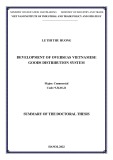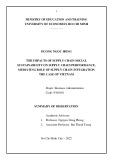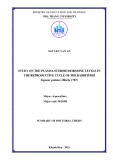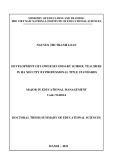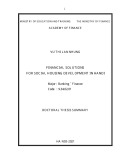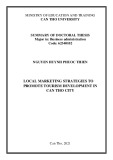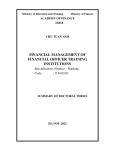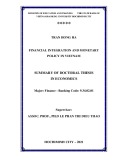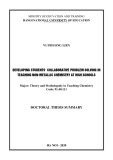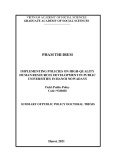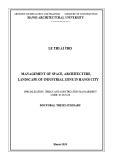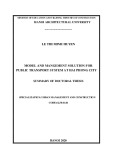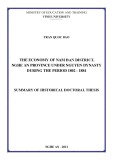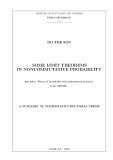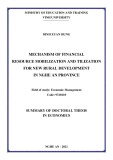
3
Summary of typical studies on psychology, Peters et al. (2006) have listed four important functions of mood
(mood as information, as a spotlight, as a motivator and as common currency) involves judgment and decision
making.
In 1990, Schwarz developed mood theory as information. According to this theory, individuals use their
emotional or mood states as information when selecting strategies to handle in most of their decisions. When
mood plays a role as information, it guides the process of judgment or decision (Slovic et al., 2002), decision
makers refer to their feelings before making decisions (Schwarz & Clore, 2003).
Model of risk as feeling was developed by Loewenstein et al. (2001) supported the mood theory as information
that Schwarz (1990) proposed when the mood plays the role of the common currency in decisions. This model
was developed by Loewenstein et al. (2001) based on a meta-analysis of more than 500 clinical and
physiological studies of mood and individual decision making, confirming that every aspect of the decision-
making process is affected by the individual's mood experiences at the time, and these experiences at the time of
the decision affect their final decision. When the mood is a common monetary function, it allows the decision
maker to compare different options (Cabanac, 1992). Accordingly, instead of trying to find a multitude of
reasonable reasons, decision makers turn complex logical thoughts into simpler emotional assessments that can
compare good and bad feelings to each other (Montague and Berns, 2002), from which to make decisions. The
study by Loewenstein et al. (2001) also concluded that the reactions of moods to risky situations often contradict
cognitive assessments of these risks. When such conflicts occur, the mood plays an important role in the risk-
making decision process. The implication of Loewenstein et al. (2001) is that financial studies should include
investor mood on the model, before making economic decisions.
When mood function is a spotlight in a two-step decision process, Schwarz (1990) argues that people tend to
make decisions depending on their mood. Even the mood caused by unrelated factors (such as weather
conditions) can affect economic decisions (such as buying or selling securities). Even mood influences decisions
that are not related to the cause of mood and influence in this way is called misattribution. In the first step, the
level (weak/strength) of mood or initial mood type affects the manipulation, making some of the knowledge
stored more accessible. When storage information is more accessible, it has a greater impact on subsequent
priorities. Leading to new information (not the initial mood) affected by the previous mood drives judgment or
decision in step two (Nabi, 2003).
The functional mood as a motivator in decision-making is evident in the affect infusion model (AIM) proposed
by Forgas (1995). In a psychophysical study published in 1987, Forgas & Bowe gave a view on the effects of
mood on the formation of impression and memory in the human brain. The results show that both memory
remembrance and memory recognition in the brain work better when the traits match the mood. Subjects spend
more time learning about the mood-appropriate details, so they make judgments that fit the mood faster. Forgas
& Bower (1987) discovered that subjects in a happy mood create better impressions and make positive
assessments than subjects in a sad. Positive mood has more pronounced effect on judgment and memory
compared to negative mood. Inheriting the research results of Forgas & Bower (1987), by 1995, Forgas proposed
the AIM model to explain the psychological aspect in the most comprehensive way about the role of mood in the
decision-making process of individuals. The AIM model of Forgas (1995) suggests that subjects in bad have a
more pessimistic view of the world. Their perception in risky situations becomes more serious than reality, so
they tend to choose safe decisions. But in a positive mood, subjects in the AIM model will promote risky
behaviors because the happy evokes positive memories and leads to better environmental assessment (Forgas &
Bower, 1987; Chou et al, 2007). Agreeing with the argument of Forgas & Bower (1987), Wright & Bower






